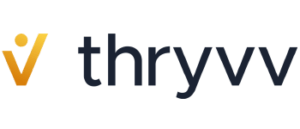"No-one escapes pain, fear, and suffering. Yet from pain can come wisdom, from fear can come courage, from suffering can come strength - if we have the virtue of resilience.
Eric Greitens, Resilience (2015)
I had a message from an incredible woman looking to work with me, great stuff right? Well…..
The core of the message seemed to be a lot of self-judgment not seeing the change she wanted to in the last year.
This last year. A year when she lost a role, she got stuck in a country she didn’t want to be in, with a job that didn’t use her strengths, living on her own, and was physically isolated though a lockdown.
This last year! I mean what the F%^K!
I’ve spent a lot of time recently becoming more familiar with Dr. Gabor Mate (author of books exploring topics including ADHD, stress, developmental psychology, and addiction) and I love the way he explains the below.
Humans only have three modes.
Immobilization – The reptilian response to threat: “Freeze”.
Hyper-mobilization – The mammalian response: “Fight” or “Flight”.
Social Engagement – The higher mammalian or primate mode.

Fight, Flight and Freeze are defensive mechanisms.
This by the way is the barrier to building long-term collaborative relationships and corporate success. A subject I consider my self an expert in. Not because I was taught to teach a program on this by Jim Tamm (author of Radical Collaboration, ex-Judge, and Mediator check out his Ted Talks, a lovely guy).
No.
It’s because I lived a large proportion of my career in this “Red Zone” of defensive behaviors…
We can defend and grow, but we cannot do them at the same time.
The third way is social engagement, where we can be curious, make conscious choices, have empathy and self-reflection.
To achieve this state we need first to have understood that we have a sense of safety. And this sense of safety comes from the unconscious, neuro-receptors telling us we’re safe. You can’t just say “you are being silly you are safe” and expect your mind/body to accept it. Although there are self regulating techniques that are highly effective.
I like the work of Shirzad Chamine (Stanford Lecturer & CEO Coach) with whom did his Positive Intelligence for coaches program a couple of years ago. He teaches really simple self regulation techniques, some of which you can use whilst in for example conflict situations, without anyone knowing. Less “weird’ than braking into a meditation chant mid budget review!
So to growth.
In coaching we are evoking transformation and (in the Co-active model) we believe that our clients are “naturally creative resourceful and whole” – that is, capable of growth. To be so, we need to be able to step out of this physiologically stimulated state of defensiveness and feel safe. This is why connection is a priority with clients and in workshops to create a “safe space” even though that sounds a bit woo woo!
The truth is this sh!t works.
Three Tools to Build Resilience and Allow Growth (1)
Note – It is important to write things in these exercises down, not just think about them.
1. Practice self-acceptance
We do not all have the same strengths. Ask your friends, colleagues and family what your top 5 strengths are. Reflect on this and create your list. Write down how these strengths show up in your life. When you think about a weakness, be conscious of what strength you have that can be used in a creative way to get the same things done.
2. Create optimism
Closed and Open Doors Exercise. The goal of this exercise is not to down play negative events but to create awareness of the positive potential that arises. Take a little time and write down, a list of things that have gone wrong in the past (doors closing) and the better thing that emerged afterward (doors opening).
Reflect on the proportion of times, when you turned what seemed “bad” situations into a gift and opportunity. Make yourself aware of how you felt in the moment, and that it took some time to become aware of the positive. What helped you open the doors? How long did it take to realize there was a new open door? What can you do to realize sooner? Did the negative effects last long? Who helped you open the doors?
"This too shall pass."
Suft Farid al-Din Attar
3. Create a resilience action list
i) Who has helped in the past?
ii) What strategies have helped deal with adversity in the past?
iii) What were your main takeaways?
iv) What current issue can you apply these tools for?
Taking this further
You could engage a coach, give me a shout (message or DM) if you want, I can point you in the right direction if I don’t have space to help.
Take strengths work deeper. Get help to use the Clifton Strengths Finder, and create a life based on leveraging your innate talents, creating strengths, and having fun becoming incredible.
Work with a coach to clarify your values, and leverage them in a way that acts as a compass to a fulfilling life. A major resilience tool.
Look to the future

And we are human and this year has for many; been one of sustained hyper-stimulation, keeping us in the defensive modalities, and constantly in this state, growth is not possible.
A desire to grow I believe is essential for a fulfilled life, but judging yourself, competing with others – you don’t need that.
None of us do.
We should be holding ourselves in Unconditional Positive Regard (2) and being kind not judging. And, move into self-compassion.
"Only when compassion is present will people allow themselves to see the truth."
A H Hamaas
And to my new client, I would say, “you are exactly where you need to be” and that “we will turn every challenge and failure into a gift and opportunity”.
References
- 1. Positive Psychology
- 2. Carl Rogers
